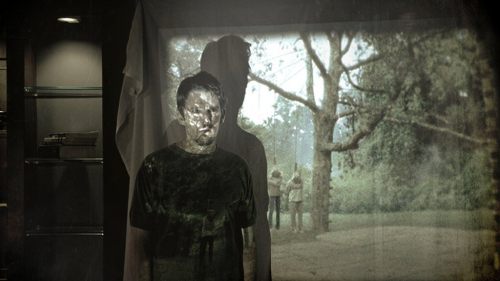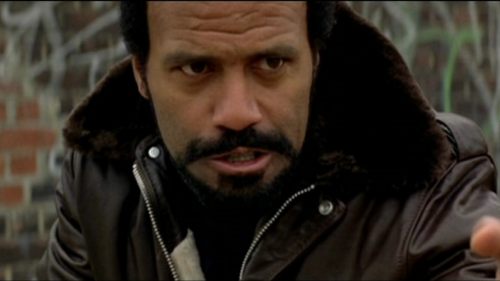The Savage Stack - DEADBEAT AT DAWN (1988)
There’s always going to be – for lack of a better term – a stack of films we’ve been meaning to get to. Whether it’s a pile of DVDs and Blu-rays haphazardly amassed atop our television stands, or a seemingly endless digital queue on our respective streaming accounts, there’s simply more movies than time to watch them. This column is here to make that problem worse. Ostensibly an extension of Everybody’s Into Weirdness (may that series rest in peace), The Savage Stack is a compilation of the odd and magnificent motion pictures you probably should be watching instead of popping in The Avengers for the 2,000th time. Not that there’s anything wrong with filmic “comfort food” (God knows we all have titles we frequently return to when we crave that warm and fuzzy feeling), but if you love movies, you should never stop searching for the next title that’s going to make your “To Watch” list that much more insurmountable. Some will be favorites, others oddities, with esoteric eccentricities thrown in for good measure. All in all, a mountain of movies to conquer.
The eighty-fifth entry into this unbroken backlog is Jim VanBebber's grimy, hyper-violent, lo-fi transmission of insanity, Deadbeat At Dawn...

Growing up in Greenville, Ohio, Jim VanBebber was a preppy kid who excelled at sports and loved his 8mm camera. Inspired by local horror host Dr. Creep, he'd shoot backyard pictures about zombies and maniacs, setting up a tent at the local church's Community Day festivities where he’d charge twenty-five cents for admission. While the pictures played through his rickety projector, VanBebber would actually narrate each short, his monologues often providing storytelling sinew in the place of sync’d dialogue and sound. VanBebber became something of a local legend: the good-looking kid with the movie camera, documenting his existence through these odd, fantastical visions.
After high school, VanBebber received a scholarship to Wright State University to study cinema, finding himself situated in a small suburb outside Dayton. At the time, that city was facing an economic downturn and rampant unemployment, becoming a minor industrial wasteland for its blue collar denizens. Fed up with professors constantly telling their students that they'd never actually own a career making movies (urging classes to instead start engaging in theory/criticism), VanBebber took $10,000 of his financial assistance, dropped out of Wright, and formed Mercury Films in 1985 with two fellow undergrads, Mike King and Marcelo Games. King and Games were still enrolled at WSU, allowing them access to the film department's 16mm cameras, which they'd use to descend into the rotting shell of Dayton and shoot their hyper-violent, DIY American scum opus, Deadbeat at Dawn ('88).
Inspired by a screening of Sam Raimi's The Evil Dead ('81), Deadbeat would take three years to properly produce, as VanBebber worked in the kitchens and front ends of nearly every local eatery, attempting to support himself in-between weekends, when they'd shoot like mad guerillas. The narrative of Deadbeat – so much as there is one – resembles the ingenious simplicity of Walter Hill's The Warriors ('79) or Bill Lustig's Vigilante ('82), filtered through a more macho take on the chaotic self-representation of NYC's premier gutter poet, Andy Milligan. Goose (VanBebber himself) is the floppy-haired, fearless leader of white boy gang The Ravens, who're currently at war with the even more Caucasian Spyders (as they don't even have ONE black member to speak of). After a bloody knife fight in the cemetery, Goose's arch rival (Paul Harper) seeks revenge for the embarrassment at all costs, looking to scare and shame the kid into never challenging him again.
Enter Bone Crusher (Marc Pitman), an unhinged, drugged out murder freak who shouts Deadbeat’s anti-human manifesto at the top of his lungs, alarming both the audience and his own cohorts. "I hate people, man! I don't care! I don't give a shit!" Eyes wild as he huffs another popper, Bone Crusher proclaims himself the "baddest motherfucker alive" before breaking into Goose's rundown apartment, beating his witchy girlfriend Christy (Megan Murphy) to death with a fucking golf club (then ripping out her intestines like "snakes"), mangling the rival gang leader's entire world. Pitman doesn't so much feel like an actor in these scenes as he does a lunatic that VanBebber just happened to spring from the local asylum for a few days of shooting. He's gloriously deranged, and a welcome shot of nastiness into a picture that’s arguably already fine in that department.
Absolutely heartbroken, Goose embarks upon an epic bender, which sees him breaking into the dilapidated pad of his shirtless squatter 'Nam Vet father (Charlie Goetz), who attacks him with a Louisville Slugger, demanding money for booze. As if disgruntled by his son's request that his pops "at least buy better beer" before handing over a $20 bill, the manic old coot instead cops heroin to shoot between his toes. The whole sequence is a nightmare of paternal indecency, as VanBebber's already shaky camera seems legitimately intimidated by Goetz's cranked-to-eleven performance. There's a reason this codger has basically a whole building to himself: he'll literally kill anyone he comes into contact with, should he think they'll try to snatch away his liquid gold or intravenous "Heaven on Earth".
The weirdest thing about Deadbeat at Dawn is that, when written down on paper as a litany of viciousness, it reads like a rather unpleasant experience (and there certainly is a grimness to the way its bombed out, post-societal dystopia obviously reflects the reality of Dayton at the time). Yet VanBebber injects a cartoonish sense of glee that keeps the proceedings insanely watchable and (dare I say it) a ton of fun. When the gangs show down, they're wearing Batman masks along with their army surplus jackets; a Goodwill approximation of the face-painting goons that made up Hill's own microcosmic comic vision of the Big Apple during the late ‘70s. When violence pops off, the gore that punctuates Deadbeat is lifted from the Tom Savini/Dawn of the Dead (’78) playbook; a bright pink approximation of human plasma.
Then there's the epic backyard brawl stunt work, as Goose is finally lifted up out of his honky-tonk mourning session by both the Ravens and the Spyders, who've joined forces to take down an armored car. During that set piece, VanBebber repels down the side of a parking garage, before tossing a throwing star the size of a lawnmower blade at a Brinks guard. The picture’s centerpiece is a manic, scream at the sky climax – a ten-minute stretch that's legendarily bonkers – as our hero hangs off the side of cars (before being smashed into a wall) after he dives over the side of a bridge during an unwieldy car/foot chase. The lack of concern for bodily harm on display is astounding, as we get the distinct feeling that, had one little thing gone wrong, somebody could've easily died while making Deadbeat. In fact, the very notion that nobody crashed and burned out of existence still seems like a small miracle.
Goose's final moments onscreen – gut shot and clinging to life after a final arterial-spray showdown with those who stole his love away – actually doubles as the perfect metaphor for VanBebber's filmmaking process; an arduous Fitzcarraldo-esque journey he'd embark upon for over a decade to get his next picture out into the world (the unpleasant faux Mondo doc The Manson Family ['97]). Here is a man who was fed up with his world, and sought to create his own, against any and all odds. Trudging down a back alley, stained with blood and filth, nothing is going to stop him from bringing this Ohio Death Trip to a screen near you. Mired by DIY setbacks and poor distribution contracts, Deadbeat at Dawn still managed to become one of the great works of scumbag underground cinema, pulsating with life while oozing with disease. It's an essential American nightmare, and Jim VanBebber is a goddamn anti-hero for the ages.
Deadbeat at Dawn is available on Blu-ray, courtesy of Arrow Home Video.



